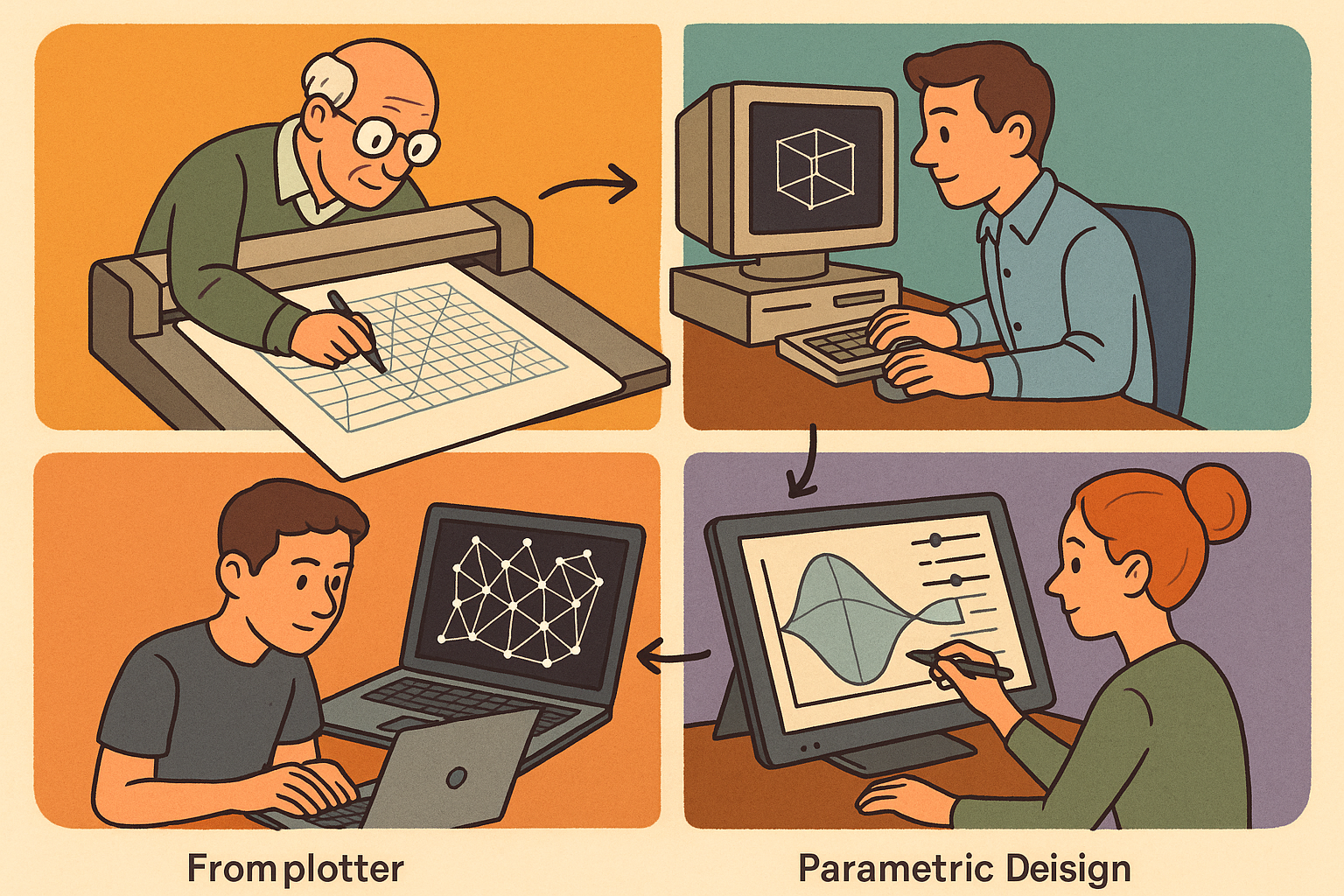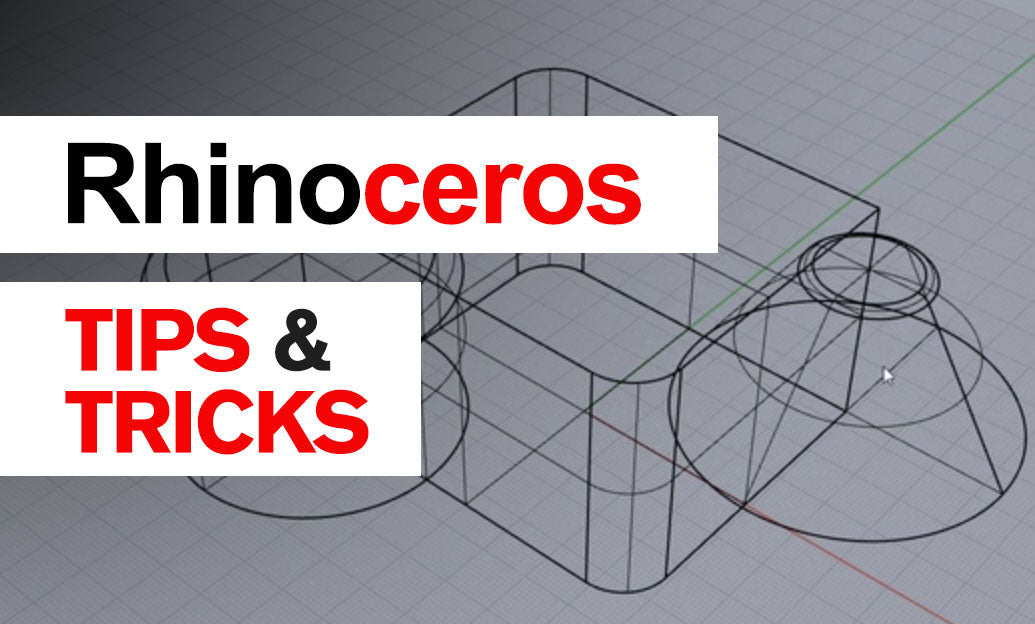Your Cart is Empty
Customer Testimonials
-
"Great customer service. The folks at Novedge were super helpful in navigating a somewhat complicated order including software upgrades and serial numbers in various stages of inactivity. They were friendly and helpful throughout the process.."
Ruben Ruckmark
"Quick & very helpful. We have been using Novedge for years and are very happy with their quick service when we need to make a purchase and excellent support resolving any issues."
Will Woodson
"Scott is the best. He reminds me about subscriptions dates, guides me in the correct direction for updates. He always responds promptly to me. He is literally the reason I continue to work with Novedge and will do so in the future."
Edward Mchugh
"Calvin Lok is “the man”. After my purchase of Sketchup 2021, he called me and provided step-by-step instructions to ease me through difficulties I was having with the setup of my new software."
Mike Borzage
Mastering Generative Design in Creo: Five Essential Practices for Transforming Concepts into Production-Ready Models
May 17, 2025 5 min read


Brief Introduction
The generative design extension inside PTC Creo has matured from an intriguing sandbox into an AI-driven exploration engine that routinely delivers double-digit gains in weight, cost, and performance. Yet many teams still treat it as an intellectual curiosity instead of a daily workhorse. This article condenses shop-floor feedback, consultant playbooks, and software best practices into five immediately usable methods that compress the learning curve and amplify return on investment.
Define Precise Objectives & Constraints Before You Click “Generate”
Generative algorithms thrive on clarity. Vague goals such as “make it lighter” or “improve stiffness” force the solver to wander through an enormous search space, lengthening iteration time and producing eccentric shapes that seldom survive design reviews. Start every study by translating business and engineering intent into unambiguous metrics:
- Performance targets – state numbers, not adjectives. Example: reduce mass by 28 % while keeping a factor of safety ≥ 2.0 and first natural frequency ≥ 240 Hz.
- Boundary conditions – fix the conductor’s exact mounting hole locations, apply the 9.1 kN transient load over 22 ms, and combine wind and vibration spectra for transport scenarios.
- Manufacturing constraints – specify additive overhang angles ≤ 45°, subtractive tool reach radii, draft pulls for injection molding, or sheet-metal bend radii.
- Business rules – ceiling on part cost, preferred alloys already stocked, RoHS compliance, and industry safety factors set by governing bodies.
Creo’s Objective & Constraint dialog allows multiple objective functions and constraint sets to be locked simultaneously, preventing non-viable variants from spawning downstream. Front-loading this rigor repays itself by eliminating reactive rework, a hidden cost that often eclipses solver minutes.
Exploit Material & Manufacturing Preference Profiles for Faster Convergence
The default material settings in many installations remain a generic 6061-T6 aluminum and a catch-all “Additive” process definition. Leaving these untouched is equivalent to instructing the solver to test every possibility under the sun. Instead, curate structured preference profiles:
Material enhancements: Populate the library with metals, polymers, and composite layups holding full temperature-dependent elastic, plastic, and coefficient of thermal expansion data. Feed the engine anisotropic stiffness tensors for carbon-fiber weave orientations or gradient alloys for hot-end components. Once loaded, these materials become selectable tokens in every new study, trimming setup time drastically.
Manufacturing bias: Apply additive, 3-axis milling, die-cast, or hybrid rulesets so that the algorithm penalizes geometries likely to violate process constraints. A 3-axis profile, for instance, will automatically discourage undercuts the cutting tool cannot reach. When additive and subtractive profiles are combined, Creo searches for forms printable in near-net condition plus light machining stock for sealing surfaces.
Quantify the business impact through side-by-side trade-off studies. One quick pass might reveal that a die-cast geometry saves \$12 per unit in machine time but adds seven weeks to mold lead time—information that moves conversations from subjective style debates to objective schedule and cost realities. Save high-performing profile sets as project templates so new team members inherit proven rules without poring through tribal knowledge.
Iterate Rapidly Through Cloud-Based Compute & Variant Management
Complex topology optimization often stalls laptops for hours while thermal throttling quietly drags. Offload the heavy lifting to Creo Generative Design in the cloud, where hundreds of CPU cores churn through parameter sweeps in parallel. A disciplined approach begins with a design of experiments (DOE) table that systemically perturbs variables—load magnitudes, fixed vs. sliding-pin supports, material grades—yielding a multidimensional response surface instead of one lonely optimum.
Creo’s Study Structure tree mirrors the genealogy of each variant. Unpromising branches can be pruned early, freeing cloud credits for richer explorations. Inside the Compare window, color-coded thumbnails and five-star ratings accelerate stakeholder reviews: a red border signals mass target missed, a blue border highlights cost compliance, while subjective aesthetic scores appear as overlay icons. Project managers gain a rapid snapshot without opening the detailed FEA plots.
When an executive pushes back on a design, swiftly duplicate the closest variant, adjust constraint weights, and re-submit; fresh results arrive in minutes rather than days. The agility transforms generative design from once-a-week milestone to fluid conversation tool.
Close the Loop with High-Fidelity Simulation & Test Correlation
Topology optimized shapes may pass static load checks yet harbor local stress concentrators invisible at coarse mesh densities. Import the candidates directly into Creo Simulation Live, which runs GPU-accelerated modal, structural, and thermal analyses while you pan and zoom. Visualizing mode shapes or temperature gradients across lattice joints exposes potential resonance or warp issues early.
Common remediation steps include:
- Auto-smoothing where jagged voxels convert to minimum-radius fillets aligned with load paths.
- Manual edits for machining flats, oil drain paths, or ergonomic grip surfaces.
Validation does not stop at pixels. Bring in sensor data from shaker-table tests or strain-gauged prototypes to correlate digital predictions with physical reality. When the delta between simulation and bench drops below 5 %, program managers gain tangible confidence to green-light production tooling.
For mission-critical sectors, extend verification to fatigue and crashworthiness. Creo’s advanced solvers calculate damage accumulation under variable amplitude loading, while explicit dynamics modules simulate drop or impact events. Embed every verification artifact as Model-Based Definition annotations—material specs, mesh settings, safety margins—so auditors can trace design provenance years later without digging through scattered spreadsheets.
Transition Seamlessly from Concept to Production-Ready Model
Generative output often arrives as voxel or facet soup: excellent for stress distribution, unsuitable for GD&T. Creo’s convergent modeling converts this geometry into a volumetric body that supports traditional parametric features. Engineers can now add tapped holes, datums, mounting bosses, or electrical isolation cutouts using familiar sketch-based tools without losing the organic core.
Additive manufacturing frequently benefits from controlled porosity or graded infill. Creo’s lattice feature lets you vary cell type, strut thickness, and grading function to fine-tune stiffness profiles while shaving off non-critical mass. Build-time estimators update in real-time, linking geometry edits to cost and duration metrics so teams avoid unpleasant surprises at the print bureau.
Shop-floor preparation remains frictionless: associative 2D drawings and Product Manufacturing Information (PMI) views update automatically when convergent bodies change. Invoke Creo’s GD&T Advisor to apply tolerances reflecting process capability discovered during earlier simulation loops. A ±0.05 mm flatness callout on a machined sealing face, for instance, may coexist with a ±0.30 mm positional tolerance on non-critical lattice edges, aligning inspection effort with performance sensitivity.
Finally, export production-ready STEP, STL, or AMF files packed with meta-data tags—material designation, revision, build orientation—for ingestion by PLM systems or direct machine toolchains. Such digital continuity eliminates the format gymnastics that historically degraded geometry fidelity and sapped engineer morale.
Brief Conclusion
When executed systematically—clear objectives, smart material and process profiles, cloud-accelerated iteration, rigorous validation, and seamless production handoff—generative design in Creo evolves from novelty to strategic differentiator. Treat the five practices above as a checklist on your next project launch. Measure resulting deltas in mass, cost, and lead time; chances are high that the numbers will narrate a compelling ROI story to finance, quality, and operations alike, ensuring generative design takes its rightful place in everyday engineering workflows.
Also in Design News

Design Software History: From Plotters to Procedural Intent: A Technical History of Generative and Parametric Design Software
January 04, 2026 13 min read
Read More
Semantic Meshes: Enabling Analytics-Ready Geometry for Digital Twins
January 04, 2026 12 min read
Read MoreSubscribe
Sign up to get the latest on sales, new releases and more …



